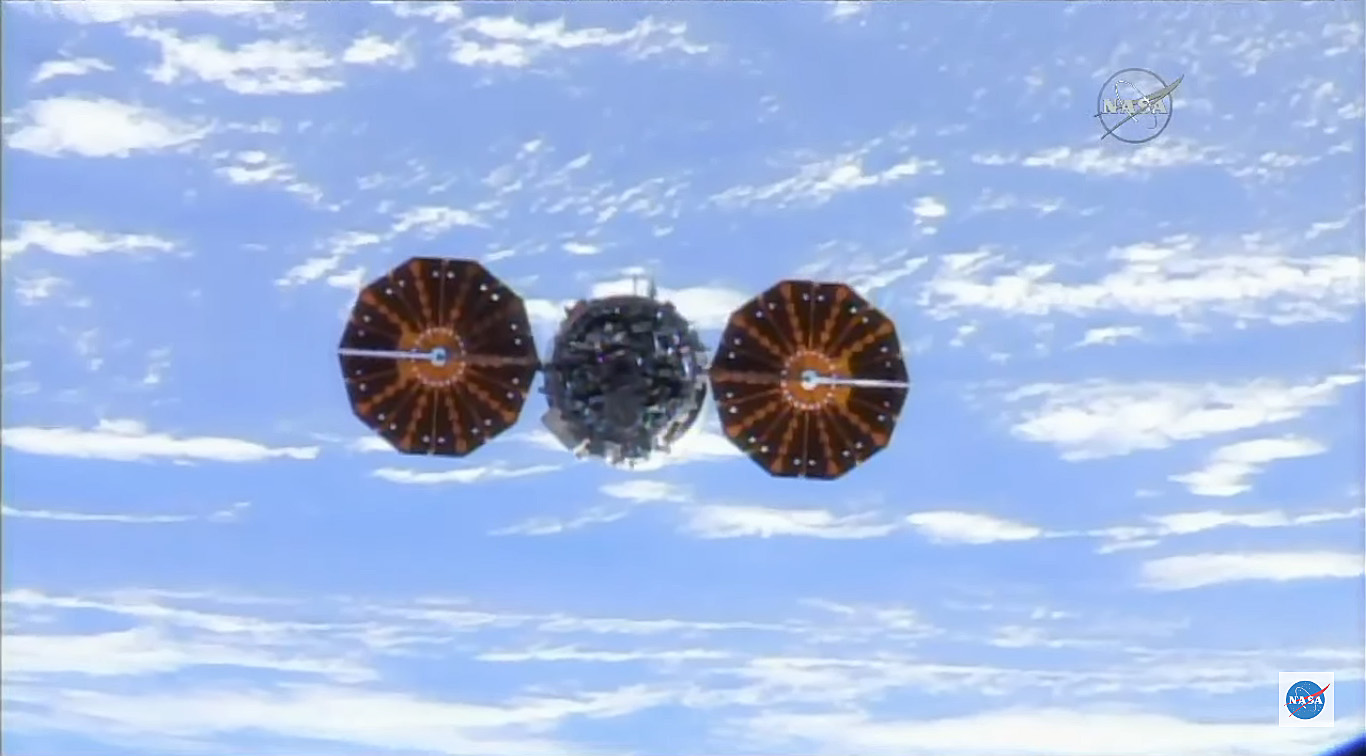It's a Super-Busy Time at the International Space Station Right Now

The last few days have been non-stop action for astronauts on the International Space Station, and there's still more work on the way.
Today (June 2), NASA astronauts Jack Fischer and Peggy Whitson bid farewell to a robotic Orbital ATK Cygnus cargo ship, an event that came amid four days of spaceship landings, launches, departures and arrivals.
"It's a remarkable time at the international space station. One of the busiest times of vehicle traffic in history," NASA spokesman Rob Navias said today as Fischer and Whitson worked to release the Cygnus cargo ship.
It all began on Friday (June 1), when two space station crewmembers returned to Earth on a Soyuz space capsule. Russian cosmonaut Oleg Novitskiy and French astronaut Thomas Pesquet of the European Space Agency landed in the remote steppes of Kazakhstan to end a six-month mission to the International Space Station. Their return left Whitson, Fischer and Russian cosmonaut Fyodor Yurchikhin behind on the station.
One day later, on Saturday (June 2), a SpaceX Falcon 9 rocket launched a Dragon cargo ship packed with 6,000 lbs. (2,721 kilograms) of fresh supplies toward the space station. That launch marked a major milestone for SpaceX: It's the first time the company reused a Dragon capsule (it first flew in 2014).
Then came today's Cygnus departure. The Orbital ATK cargo ship launched to the space station in mid-April to deliver 7,600 lbs. (3,500 kilograms) of supplies. It will be intentionally disposed of by burning up in Earth's atmosphere on June 11.
"This is the first time in history that two U.S. commercial cargo vehicles will be in free flight at the same time," Navias said.
Breaking space news, the latest updates on rocket launches, skywatching events and more!
But we're not done yet.
On Monday (June 5), the Dragon spacecraft that launched Saturday will arrive at the space station. Whitson and Fischer will use the station's robotic arm to capture the Dragon capsule and attach it to a berthing port so the craft can be unpacked.
According to Navias, the space station crew will get a bit of a breather after the Dragon arrival. But in 10 days, they'll see another arrival: an uncrewed Russian Progress cargo ship packed with still more supplies, he added.
Then on July 28, a new crew is scheduled to launch to the space station on a Russian Soyuz spacecraft. So, whew! There's still more space action to come this summer!
Editor's Note: This article has been corrected to reflect that NASA astronaut Jack Fischer remains on the space station, not French astronaut Thomas Pesquet.
Email Tariq Malik at tmalik@space.com or follow him @tariqjmalik and Google+. Follow us @Spacedotcom, Facebook and Google+. Original article on Space.com.

Tariq is the award-winning Editor-in-Chief of Space.com and joined the team in 2001. He covers human spaceflight, as well as skywatching and entertainment. He became Space.com's Editor-in-Chief in 2019. Before joining Space.com, Tariq was a staff reporter for The Los Angeles Times covering education and city beats in La Habra, Fullerton and Huntington Beach. He's a recipient of the 2022 Harry Kolcum Award for excellence in space reporting and the 2025 Space Pioneer Award from the National Space Society. He is an Eagle Scout and Space Camp alum with journalism degrees from the USC and NYU. You can find Tariq at Space.com and as the co-host to the This Week In Space podcast on the TWiT network. To see his latest project, you can follow Tariq on Twitter @tariqjmalik.
